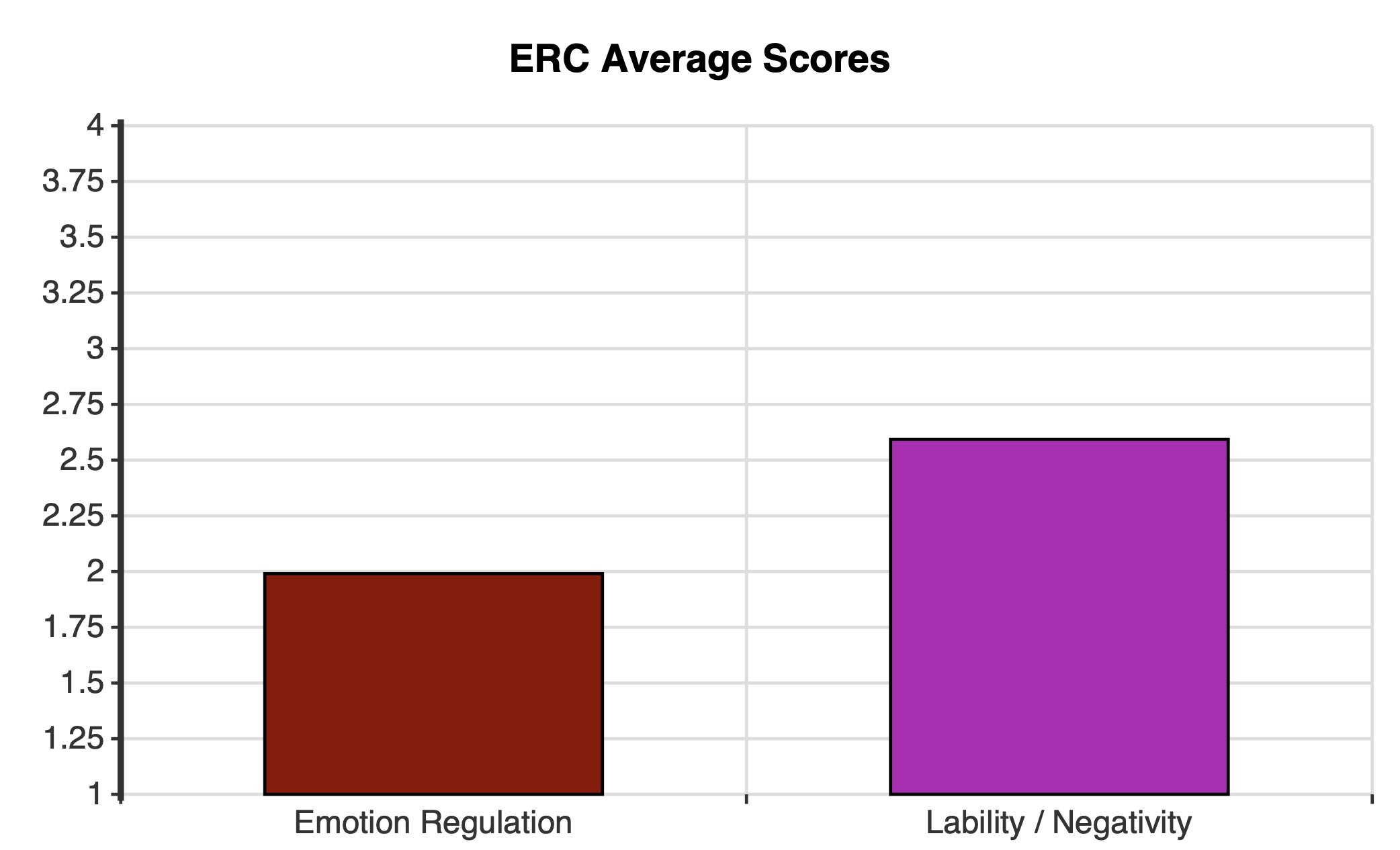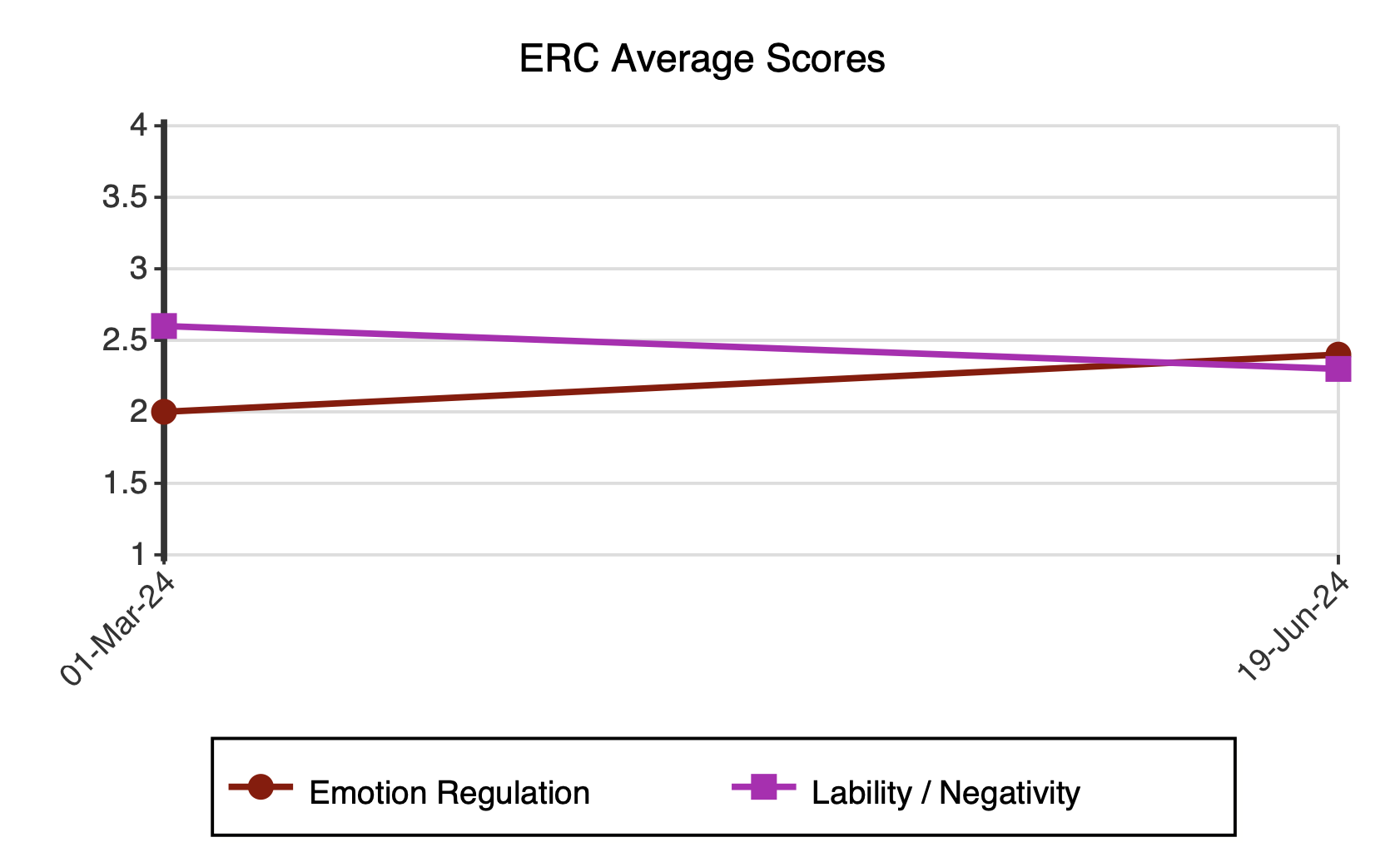The Emotion Regulation Checklist (ERC) is a 24-item measure of children’s self-regulation. The ERC can be answered by adults well acquainted with the child, such as the father, mother, caregiver, or teacher. It was designed to assess the child’s ability to manage and to cope with emotions.
The ERC (Shields & Cicchetti, 1997) items assess affective stability, intensity, valence, flexibility, and situational appropriateness of children between the ages of 6 to 12 years, but it has also been applied to younger children (Morgan, Izard, & King, 2010; Shields et al., 2001; Shields, Ryan, & Cichetti, 2001)..
Items are rated by a parent on a 4-point scale and are weighted both negatively and positively. The ERC is comprised of two subscales:
Emotional regulation skills are relevant for a healthy socio-emotional life. The self-regulation of emotions increases the odds of peer acceptance and of having a well-adjusted social life (Lopes, Salovey, Côté, & Beers, 2005). Emotional regulation allows individuals to reflect on conflict situations and to analyse them from the perspective of the others with whom they interact. Emotional regulation is related to several dimensions of social functioning, such as empathy and prosocial behaviour (Denham et al., 2012; Eisenberg, 2001). The absence of emotional regulation skills is usually found among children with behavioural problems (Izard et al., 2008).
Example ERC Items:
The ERC comprises two scales (and an additional total score explained below), with a score and “average score” presented. The average scores represent raters sense of the frequency the child exhibits the measured attributes, where 1 = Rarely or never and 4 = Almost always.

Item 12 does not load onto either of the subscales (Shields & Cicchetti, 1997), but provides an indication of other child behaviours.

A graph is presented showing the average scores, and if the ERC is administered more than once, the graph will show the subscale average scores over time.

Additionally, an adaptive emotion regulation total score (range 23 to 92) is presented where a higher score is indicative of good emotion regulation and lower scores indicative of poor emotion regulation. This score is calculated by the sum of the emotion regulation scale and the inverse of the emotional lability/negativity scale (i.e., not reverse scoring items 4, 5, 9, 11 but reverse scoring all others in this scale).
The internal consistency of both scales on the ERC has been shown to be adequate (L/N Cronbach’s alpha = .96; ER Cronbach’s alpha = .83), and the two scales are significantly correlated (r = -.50, p < .001). One single measurement of ER is generated from the overall scores in both subscales (α = .89; Shields & Cicchetti, 1997). Subscale scores also correlate significantly with other measures of similar constructs in the anticipated direction, including the California Child Q-Set (Block & Block, 1980).
Shields, A., & Cicchetti, D. (1997). Emotion regulation among school-age children: The development and validation of a new criterion Q-sort scale. Developmental Psychology, 33(6), 906–916. https://doi.org/10.1037/0012-1649.33.6.906
Denham, S. A., Bassett, H. H., Mincic, M., Kalb, S., Way, E., Wyatt, T., & Segal, Y. (2012). Socialemotional learning profi les of preschoolers’ early school success: A person-centered approach. Learning and Individual Differences, 22(2), 178-189. doi:10.1016/j.lindif.2011.05.001
Eisenberg, N. (2001). The core and correlates of affective social competence. Social Development, 10, 120-124. doi:10.1111/1467-9507.00151
Izard, C. E., King, K. A., Trentacosta, C. J., Morgan, J. K., Laurenceau, J.-P., Krauthamer-Ewing, E. S., & Finlon, K. J. (2008). Accelerating the development of emotion competence in Head Start children: Effects on adaptive and maladaptive behavior. Development and Psychopathology, 20(1), 369-397. doi:10.1017/ S0954579408000175
Lopes, P. N., Salovey, P., Côté, S., & Beers, M. (2005). Emotion regulation abilities and the quality of social interaction. Emotion, 5(1), 113- 118. doi:10.1037/1528-3542.5.1.113
Morgan, J. K., Izard, C. E., & King, K. A. (2010). Construct validity of the Emotion Matching Task: Preliminary evidence for convergent and criterion validity of a new emotion knowledge measure for young children. Social Development, 19(1), 52– 70. https://doi.org/10.1111/j.1467-9507.2008.00529.x
Henriques Reis, A., Silva de Oliveira, S. E., Ruschel Bandeira, D., Côrtes Andrade, N., Abreu, N., & Sperb, T. M. (2016). Emotion Regulation Checklist (ERC): Estudos Preliminares da Adaptação e Validação para a Cultura Brasileira. Temas em Psicologia, 24(1), 77-96.
Shields, A., Dickstein, S., Seifer, R., Giusti, L., Magee, K. D., & Spritz, B. (2001). Emotional competence and early school adjustment: A study of preschoolers at risk. Early Education and Development, 12(1), 73-96. doi:10.1207/ s15566935eed1201_5
Shields, A., Ryan, R. M., & Cicchetti, D. (2001). Narrative representations of caregivers and emotion dysregulation as predictors of maltreated children’s rejection by peers. Developmental Psychology, 37(3), 321-337. doi:10.1037/0012- 1649.37.3.321
NovoPsych’s mission is to help mental health services use psychometric science to improve client outcomes.
© 2023 Copyright – NovoPsych – All rights reserved